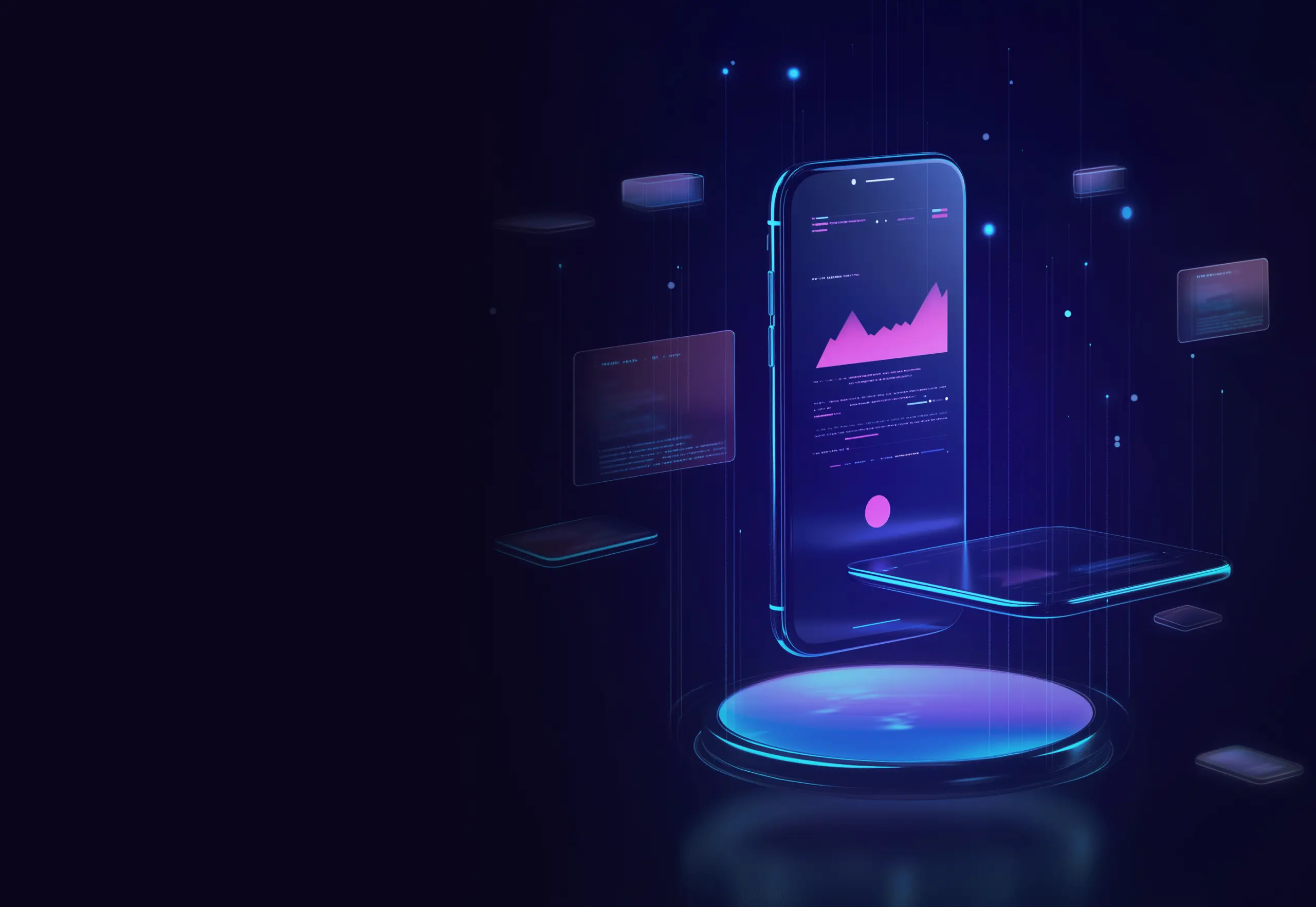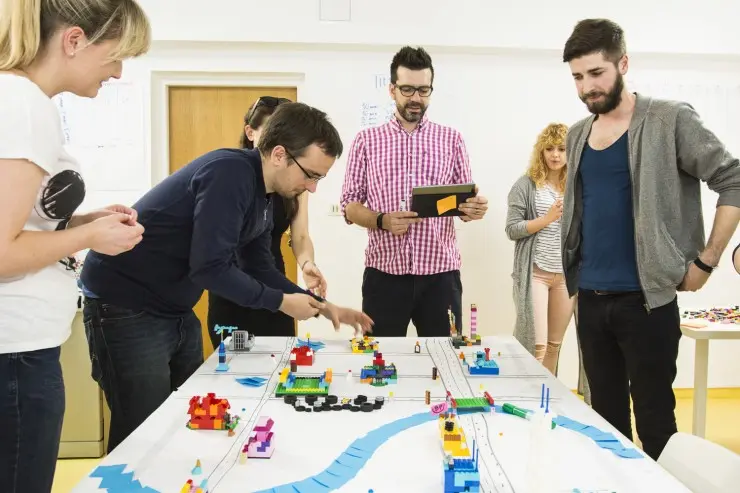
At 10Clouds, we noticed that the non-technical teams within our Marketing, Design and HR departments had found methods of communication and knowledge sharing that were totally different from one another. We wanted to let the teams perceive the big picture and the vision of the company as a whole so it would improve their productivity in the future.
Improving communication
As business grows, it enters different stages of company expansion, which present distinct problems to overcome. These difficulties can easily grow bigger and bigger.
We love Agile!
Agile methodologies can be used in every department’s work, so for that reason we decided to have everyone learn about SCRUM. Sounds simple, doesn’t it? Trust me when I say it’s much more difficult than it sounds! It’s not an easy task to teach people who haven’t had anything to do with project management in their daily routines. We came up with an idea of simulating the real SCRUM development process with… LegoScrum! I mean, what could be better than teaching SCRUM with bricks and games?
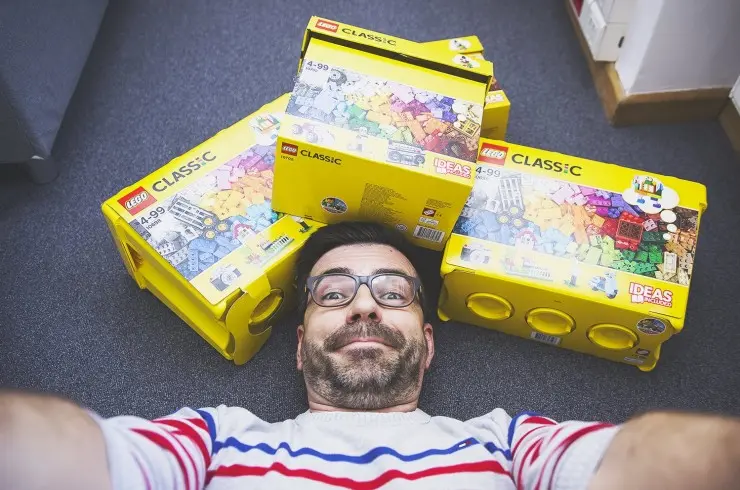
The LegoScrum method is nothing new. Agile trainers use it as a tool to demonstrate the lights of cooperation and the shadows of competition. You can find plenty of LegoScrum simulations online. I based our method on the original version, which is available here. Of course, I added some spices to make things a bit more interesting.

Preparations

The best part of preparing for the LegoScrum workshops was ordering tons of Lego bricks!
The LEGOs were our main building material and we used them to literally build the Product Owner’s (PO) vision of a city.
There are many different types of LegoScrum workshops so choosing the right one depends on the needs of the organisation. For this workshop, my personal goal was to improve communication and teamwork between departments so I decided that 4 groups would create an entire town in only three iterations.
Remember, before you start working on a workshop you need a clear, defined vision of what you want the participants to achieve. I wanted to be time-efficient so I made a backlog for every team on my own. I gathered elements of the town and divided them into 4 categories: infrastructure, public institutions, leisure activities and real estate. Every team was responsible for building out each category.
Estimating workload for every task in the backlog was one of the most complicated things for the participants. Many of them had their first experience with estimation during the workshops so using Story Points or the Fibonacci Scale was a tough thing to do. In my opinion, estimation is the crucial part of SCRUM (it’s the time when development teams work on every item from their backlog while trying to figure out how to deliver them on time) so I really didn’t want to skip this part. It also drives the Development Team to dispel backlog concerns and ask the Product Owner about the Acceptance Criteria. I needed an intuitive estimation method, so I chose a T-shirt scale method. We used common T-shirt sizes (XS, S, M, L, XL, XXL) to assess how much work we need to do.
To spice things up a bit, after each planning session, I had every team roll a dice to determine if one of their team members would have to go on “enforced holiday” during the next sprint. My rule was clear—if your team rolls a 5, it loses one team member for 3 of the 7 minutes designated to the long sprint. So, as you can figure out—it could be a crushing loss for the unlucky team that rolls a 5.
OK, to sum things up— we had a backlog, lego bricks and participants. At this point, we had everything that we needed to finally get started!
Forming teams
First, we needed to divide the participants into four teams. To do this, I put the same amount of lego bricks in four different colours into a box and asked each person to draw one of them.

After the participants fell into their designated groups, they were given a few moments to get to know each other. After that, the groups came to the PO, which was myself, to listen to my shared vision of the town.
Before they began, I set a few ground rules about the city, which were as follows: It had to fit on a single table, have a river that would need to be crossed and…that was it! The rest of the town features had to appear during the estimation process. I didn’t enforce too many town requirements on purpose and now I know, that it isn’t the best solution. As a tip, I would recommend being more strict and providing a more complex structure.
During the town construction process, participants could use every material they had at their fingertips, not only LEGO Bricks. The only condition was that they could only use three iterations to build the whole city. Once things got going, I finally started to give feedback about their work and explained that if they wanted to finish a task, they had to focus on cooperating rather than competing with one another. Anyway, you could definitely feel the spirit of competition within the room and it was extremely tough, but trust me—teams rapidly changed their minds about that during the workshop. It is simply impossible to finish construction in LegoScrum without collaboration occurring within every team! The version of LegoScrum I chose, designated me as the person responsible for the backlog.
Next was the estimation process where the team task was to assign T-shirt sizes to the backlog items. The backlog was just one word items like “river”, “road”, “police station”, so suddenly, teams started asking me more and more questions. What was most important here was confirming an understanding of every backlog item with the other teams.
When the backlog was cleared and teams finished the estimation process, we could proceed to planning. During this phase, teams planned their work and placed special notes with information about possible delivery to the main board. After the last note and final workflow declaration, teams were finally ready to start!
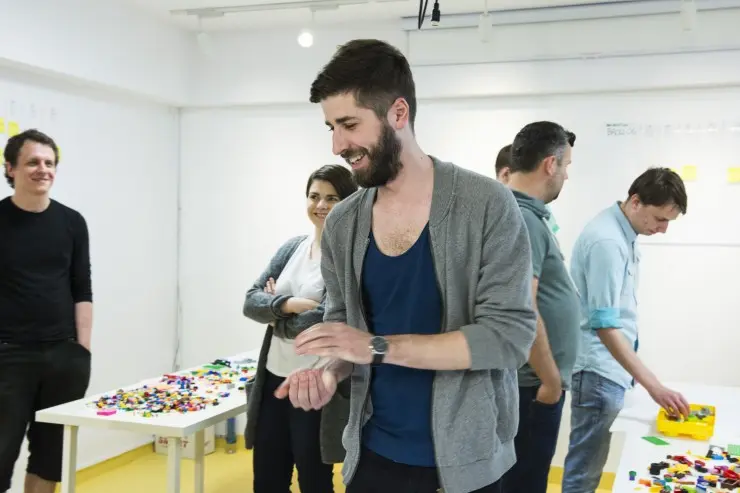
The most frightening part of the whole game was the “roll-the-dice rule”. The first round of dice throws brought winners and losers, but it wasn’t enough to break their will to fight. I could tell that any loss of a person’s time, provided even more motivation for the rest of the team members to succeed!
Until the end of the workshop, the room was truly a battlefield full of screams, sweat, and roars of motivation. The entire experience was incredible!
The review stage was a great opportunity to compare my personal vision with what the teams delivered. Right here I must repeat one thing again: I should be a more demanding and serious person. But how could I be that when I saw the wonderful work of these talented people? You can call me sensible but I didn’t have the heart to reject anything!
The room was full of silence during the review process but even then, few participants were already thinking about future sprints. After my first review, I could see that the teams were kindly surprised by the fruits of their collaboration.
Last two iterations led to clearing out the backlog. In fact, the teams did even more! They added additional tasks on their own request in order to streamline processes!

Conclusions
I have to admit that the most interesting behaviors among the people that I noticed were during the product presentation. The teams tried to show their products even when they were consciously aware of their defects and blemishes.
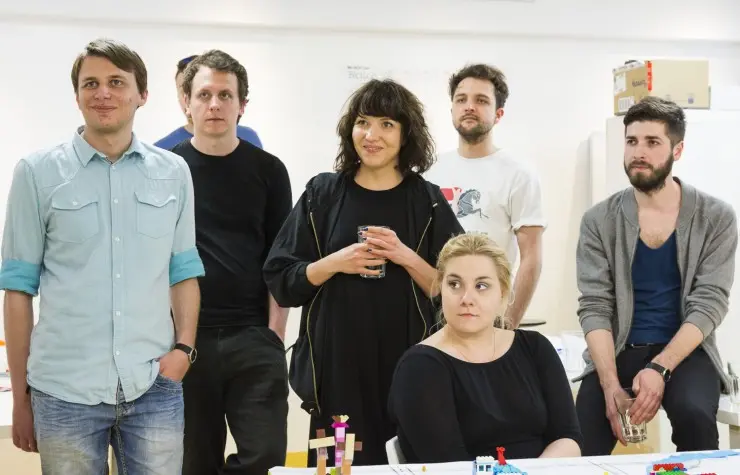
I have to give one example that perfectly shows how important cooperation is inside an organization. One of the teams picked a card with the word “river” and wasn’t sure about the location. They were discussing whether it should cross the entire town or be located somewhere else that was nearby. My answer appreciated their idea of having an “inside town river”, but I noticed that none of the teams had a “bridge card” in their backlog. After a while, I saw a team creating a river across the town and as an answer, I heard: “We made a deal with the infrastructure team, we will build roads and in return, we get two bridges!”. You can imagine how proud I was!
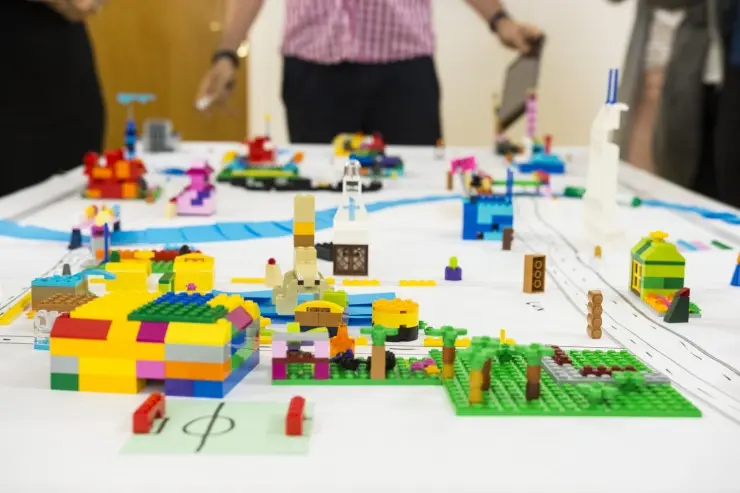
The main goal of this workshop was to show how to work together on something really complicated. In my opinion, we definitely reached our goal. You can be sure this workshop won’t be the last one in our SCRUM series, so look forward to future posts about them.
May the Lego Brick be with you!



